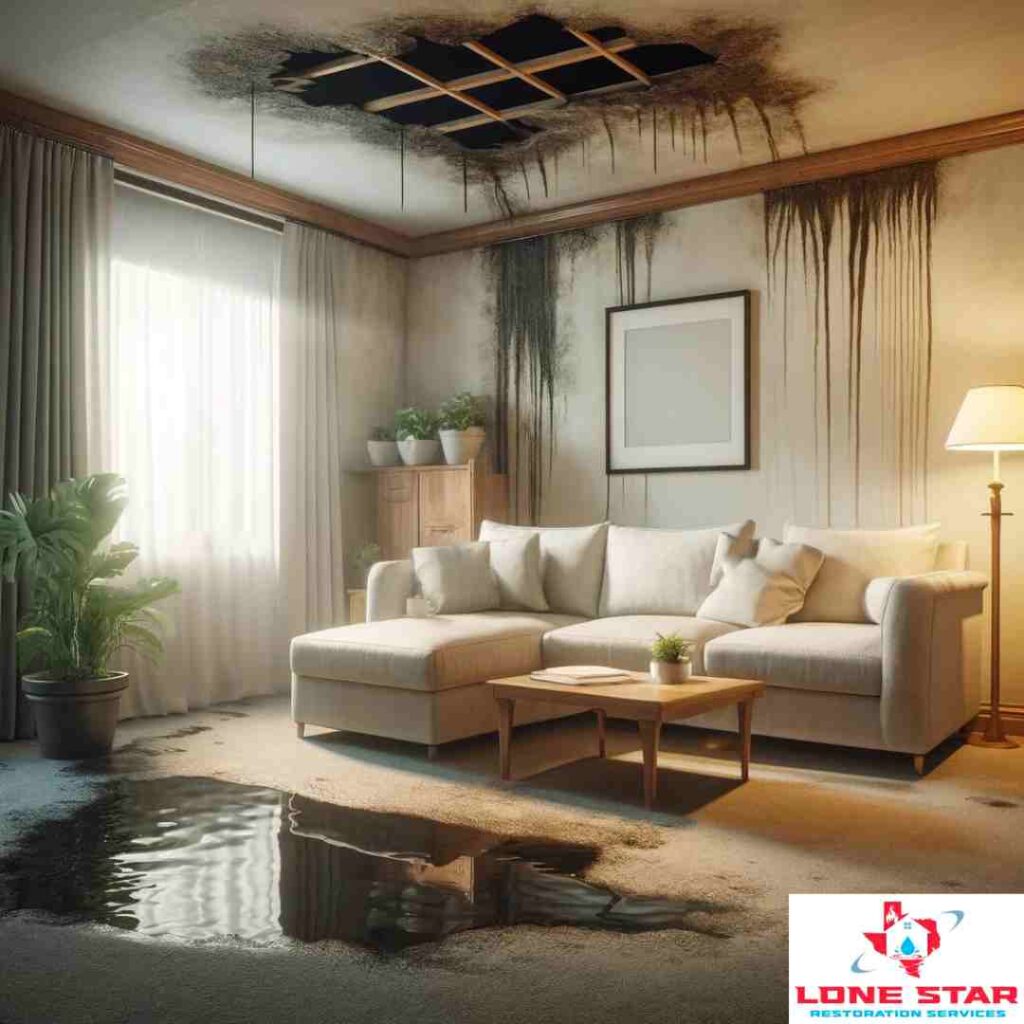The Hidden Dangers of Water Damage: Essential Insights You Should Be Aware Of
Water damage is a common but often underestimated peril that can afflict homes and businesses alike. Whether it’s due to natural disasters, such as floods and heavy rains, or household mishaps like leaking pipes and appliance failures, the impact of water intrusion can be immediate and severe. However, beyond the visible devastation of soaked furnishings and waterlogged walls, there are hidden dangers that many property owners may not consider until it’s too late. Understanding these risks is crucial not only for the safety and well-being of the inhabitants but also for the structural integrity and financial viability of the property. In this blog post, we will delve into the less obvious but equally critical hazards of water damage, providing insights and guidance to help you mitigate these risks effectively.
This exploration will not only help you recognize early signs of water damage but also guide you through practical steps to take before professional help arrives. We’ll uncover the hidden costs associated with delayed or insufficient water damage control and offer tips on maintaining the value and safety of your property. Join us as we navigate the complexities of water damage, aiming to arm you with the knowledge needed to protect your investment and ensure a secure environment.
Immediate Dangers of Water Damage
When water infiltrates a space, the immediate dangers it poses are not only disruptive but can also be life-threatening. One of the first risks to consider is the potential for electrical hazards. Water can cause short circuits and electrical fires if it comes into contact with power outlets, wiring, or appliances. It’s essential for safety to turn off the main power supply in areas affected by water damage until a professional can assess and secure the electrical systems.
Structural damage is another immediate concern. Water can quickly compromise the integrity of building materials like drywall, flooring, and ceilings, causing them to warp, swell, and deteriorate. This weakening of structural elements can lead to collapses, which pose serious risks to occupants.
Additionally, wet surfaces create slip and fall hazards, one of the most common accidents in water-damaged environments. Areas like hardwood floors, tiles, and other smooth surfaces can become incredibly slick when wet. Immediate clean-up and drying, followed by a thorough assessment for residual dampness, are crucial to preventing accidents and further damage.
Addressing these immediate dangers promptly is vital in preventing further harm and ensuring the safety of everyone in the building. This urgency underscores the importance of quick action and the need for a comprehensive approach to water damage restoration.
Mold and Mildew Growth
One of the most insidious consequences of water damage is the rapid growth of mold and mildew. These fungi thrive in moist, warm environments, and a water-damaged property offers the perfect conditions for mold spores to settle and proliferate. Mold growth can begin within just 24 to 48 hours after water exposure, making prompt and effective drying and dehumidification critical.
The health implications of mold exposure can be significant, particularly for individuals with allergies, asthma, or weakened immune systems. Mold and mildew can trigger a variety of symptoms including respiratory issues, throat irritation, nasal stuffiness, eye irritation, and in severe cases, skin rashes. Prolonged exposure can lead to more serious health problems, making it crucial to address mold risks immediately after any water incident.
Preventing mold growth involves more than just removing visible water. It requires controlling indoor humidity levels, ensuring thorough drying of all materials, and possibly treating surfaces with antimicrobial treatments to inhibit mold growth. Professional restoration services are often needed to assess the extent of moisture penetration using specialized equipment and to implement strategies that effectively mitigate mold risks in water-damaged areas.
Long-Term Structural Issues
Water damage can lead to significant long-term structural problems if not adequately addressed. Continuous exposure to moisture can severely weaken the foundational elements of a building. Wood that remains damp for an extended period is prone to rot, which compromises its structural integrity. Similarly, metal components may corrode, further weakening the structure and potentially leading to costly repairs down the line.
It is crucial for property owners to be vigilant for signs of ongoing structural damage, such as sagging floors and ceilings, cracks in walls, and doors or windows that no longer close properly. These signs might not appear immediately but can manifest over time as the water continues to affect the building materials. Regular inspections by professionals can help identify and address these issues before they escalate into major safety concerns.
Additionally, the accumulation of moisture can adversely affect other less visible components of a building, such as adhesives and sealants. These materials are crucial for maintaining the airtightness and water resistance of windows, doors, and other junctions. When these adhesives become compromised due to moisture, it can lead to further water intrusion and damage, exacerbating the cycle of degradation. This subtle penetration might go unnoticed until significant damage has occurred, underscoring the importance of comprehensive moisture management and regular checks even in seemingly unaffected areas. By adopting a proactive approach to water damage, property owners can ensure the longevity and safety of their investments.
Hidden Costs of Water Damage
The financial impact of water damage extends beyond the immediate cleanup and restoration costs. Unaddressed water damage can lead to more significant expenses down the road, including extensive repairs and replacements of damaged structures and contents. Additionally, properties that have suffered from water damage may see a decrease in market value, especially if there is a history of mold or structural issues.
Insurance may not always cover all aspects of water damage, particularly if the damage is deemed to have resulted from negligence in maintenance. It is important for property owners to understand their insurance policies thoroughly to know what is covered and what is not. Increased premiums or outright denial of coverage can also become a factor if water damage becomes a recurrent issue.
Furthermore, the process of filing insurance claims for water damage can be complex and time-consuming. It often requires detailed documentation of the damage, proof of regular maintenance, and sometimes a professional assessment to determine the cause and extent of the damage. Failure to comply with these requirements can lead to disputes with insurance companies, delayed payouts, and in some cases, reduced compensation. Property owners should maintain comprehensive records of all maintenance and repairs, and consider consulting with a claims adjuster or a restoration professional to ensure all documentation is accurately prepared and submitted. This proactive approach can help streamline the claims process and protect against potential financial losses.
Prevention and Early Detection
The best way to manage the risks associated with water damage is through prevention and early detection. Regular maintenance of plumbing and HVAC systems can prevent many common sources of water damage. It is also wise to inspect roofs and windows regularly to ensure they are in good condition and capable of keeping water out.
Installing water sensors and moisture detectors in critical areas like bathrooms, kitchens, and basements can help catch leaks before they lead to significant damage. These devices are relatively inexpensive and can provide peace of mind by alerting property owners to potential problems early on.
Additionally, educating property owners and staff on the signs of early water damage and the steps to take immediately after detection can significantly reduce the impact. Training should include how to manage minor leaks effectively, the importance of shutting off water sources in emergency situations, and who to contact for rapid response and repair. This knowledge empowers individuals to act swiftly and decisively, minimizing water exposure and preventing minor issues from escalating into major, costly problems. Establishing a routine checklist for regular inspections and a protocol for emergency situations can further enhance the resilience of a property against water damage risks.
Conclusion
Understanding the hidden dangers of water damage is essential for any property owner. By recognizing the immediate and long-term risks, implementing preventive measures, and acting swiftly when water damage occurs, you can protect your property and ensure the safety and health of its occupants. Remember, when dealing with water damage, the key is quick action and professional intervention. If you suspect water damage, it’s important to consult with professionals like Lone Star Restoration who can provide expert assessment and restoration services to mitigate these risks effectively.





